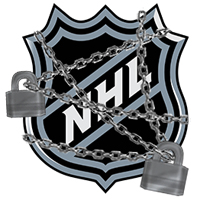You win some, you lose some. But how good are you at staying positive when the kids are getting smoked EVERY game ? The yells from parents in the stands get louder and the applause after a game get softer. The team is in a slump and parents are feeling it too.
For some positive inspiration, I turned to one of the most positive coaches in the business of teaching skills, team play and fitness for competitive hockey players. Phil Simeon - Owner and Lead Instructor of NF Hockey in Oakville, Ontario, the heart of good hockey. http://www.northernfreezehockey.com/ This is a great site if you're looking for advice on improving the game, including quick timing drills and sock puck hockey! Good stuff.
 |
| Phil Simeon has taught programs across the North America for over 15 years |
HOW TO BUST A SLUMP
by Phil Simeon
Youth players are effected by the moods of their coaches. If players sense a coach's frustration or disappointment they will not respond well, in fact they are more likely to regress in their performance and feel insecure about their abilities. Coaches need to recognize the importance of their influence over youth players - focus on being positive. Here are some tips for youth coaches to bust out of a slump:
WHAT NOT TO SAY
Don't talk about the team's record, stats, or recent poor performance, if anything you want to distract players from this, don't over do it with the positive cheering and motivational speeches, they get tiring when things aren't going well.
WHAT TO SAY
Focus on the importance of hard work as a team goal, explain why hard work is important
be consistent in what you say even in tough times.
SET GOALS
Set simple goals for the forwards (for example, as a group they have to get 15 shots on net)
Set simple goals for the defense (for example, they can never leave the front of the net open in their zone)
Recognize the team's performance against the goals you set, rather than the score of the game
Do not set goals for goalies!
Do some fun drills in practice like 'baseball on ice'
http://www.northernfreezehockey.com/2010/02/hockey-baseball-game.html
THE POWER OF POSITIVE THINKING
Slumps are frustrating for everyone. Losing is not fun. Everyone involved needs to be realistic about expectations. We all want our kids to be great at sports, but it's important to recognize challenging times. Start with finding small successes in performance. Identify what was done well. For example, in a close loss the team must have done some things well - talk about them and build on it. Let the kids know collectively and individually. Be consistent in your messaging and don't talk about every little thing.
Always recognize hard work and encourage it too. Boost confidence by telling players what they're doing well, and exaggerate about it too. A third of great performance is based on strong confidence, the other two are hard work and talent. Confidence and hard work can go a long way even with limited talent.
AVOIDING THE PAST
You can't necessarily control future performance, but there a couple of keys to maintaining sports' success. Be consistent in what you say, do, and expect from the team. If you get too wound up, or let your guard down too much you can expect that from your players. Your players read and respond to your behavior, messaging, and attitude. If you get angry, your players will react emotionally. If you are chilling out too much, your players will too. These reactions prevent the opportunity to succeed.
Thanks Phil and here's to slump busting!
http://twitpic.com/photos/NFHockey
Follow us on Twitter twitter.com/NFHockey
Like us on Facebook NF-Hockey
Phil Simeon
NF Hockey
northernfreezehockey.com
E: phil@northernfreezehockey.com
P: 905-582-6603
http://www.northernfreezehockey.com/




















